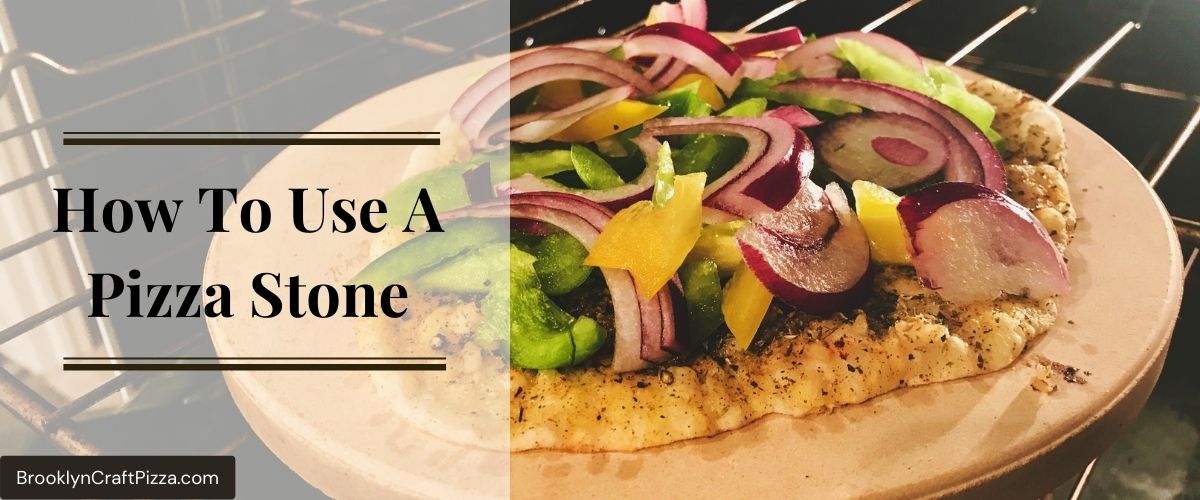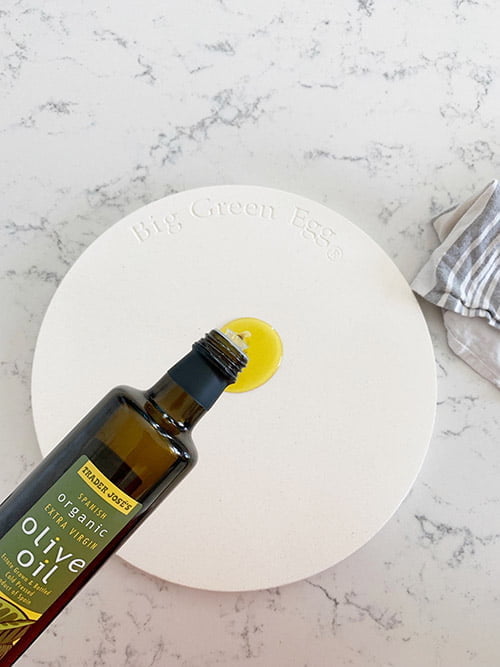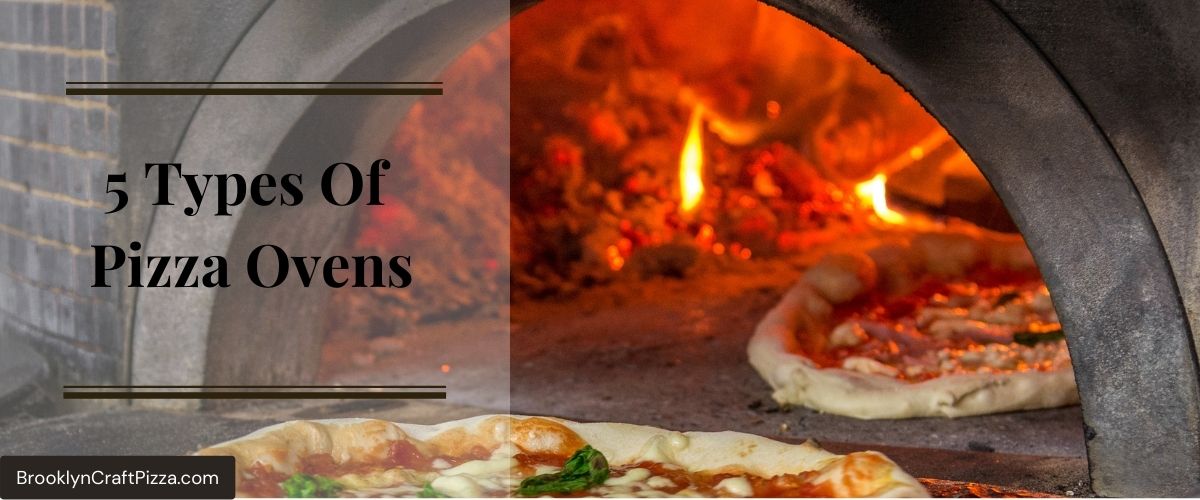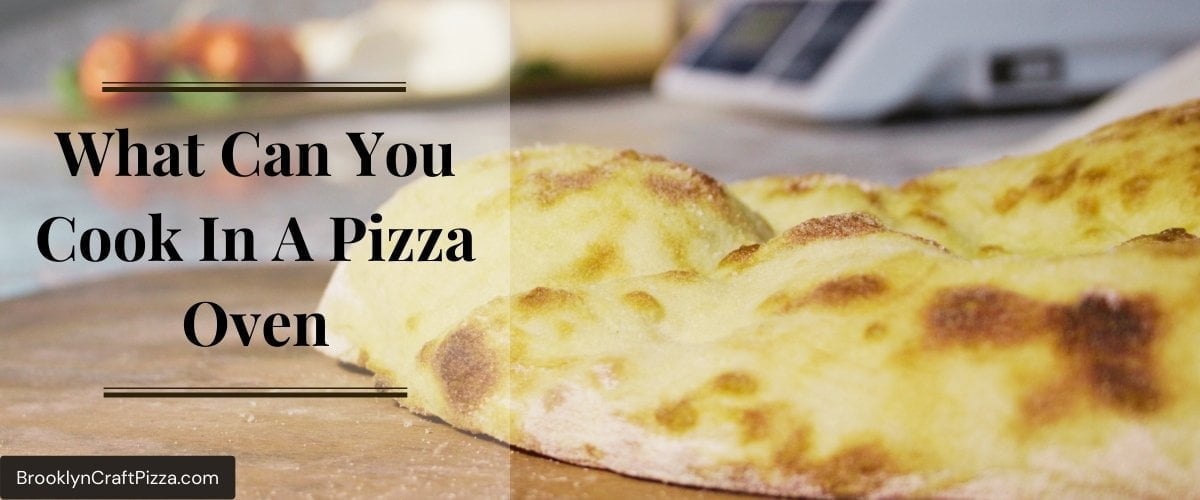How To Use A Pizza Stone? Step-by-step Guide For You
Are you looking to up your pizza game? A pizza stone is the perfect addition to your kitchen arsenal.
If you love pizza, then you need a pizza stone. A pizza stone is the key to getting that perfect crispy and cheesy crust every time. Not sure how to use one?
A pizza stone is a great way to cook pizzas at home. Not only does it give the pizzas a nice crispy crust, but it also prevents them from becoming soggy.
In this guide, we will show you how to use a pizza stone properly so that you can get the best results every time.
This guide will walk you through everything you need to know. From choosing the right pizza stone to preheating it properly, we’ve got you covered. So get ready to make some delicious pizzas!
What is pizza stone and how it works (in short)…
A pizza stone is a type of ceramic tile that is used for cooking pizzas. It is designed to retain heat so that the pizza can cook evenly. It works by retaining heat and giving it off gradually so that the food being cooked on it cooks from all sides at once.
This results in a crispy crust with a moist-soft inside. Although there are “pre-made” stones available, they can also be made of ovenproof earthenware. They do not have to be pre-treated with olive oil or any other lubricant before each use.
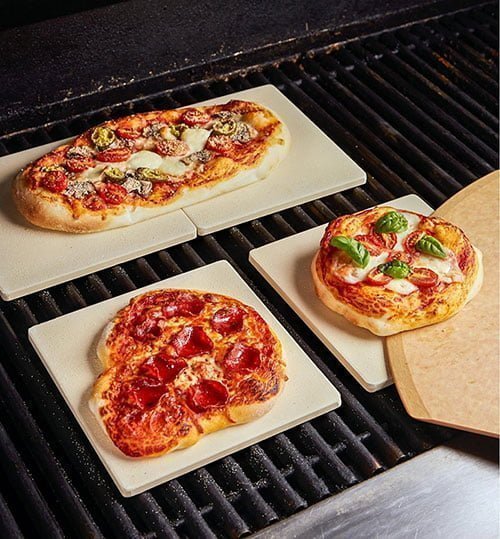
The main benefit of using a pizza stone is that it gives the crust a nice crispy texture. It also prevents the toppings from becoming soggy, which is a common problem with home-cooked pizzas.
Pizza stones come in different shapes and sizes, so you should choose one that is best suited for your needs. There are also different types of pizza stones, such as those made of cordierite or terracotta.
How to Use a Pizza Stone (5 Easy Steps)
Pizza stones come in different sizes depending on how many pizzas you want to make at a time. If you only need to make one pizza, then get a smaller stone that will fit inside your oven; if not, get a larger stone that can accommodate more pizzas simultaneously.
There are also rectangular, square and round styles of stones available. Make sure the shape is right for your needs before purchasing one!
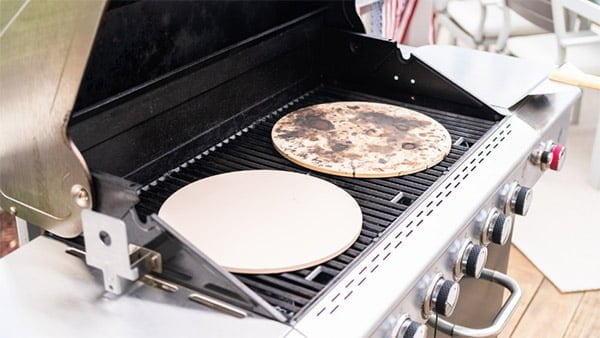
Before we get started on learning how to use a pizza stone
When using a stone for baking bread, you need a smooth unglazed floor tile at least two inches larger than the size of your oven shelf or grate.
This can be purchased at any hardware store for $20-$30 and is very useful in its own right as it will provide years of use for breads, rolls, cookies and roasts.
The disadvantage with pizza stones is that they don’t absorb enough moisture from rising dough to truly allow that “oven spring” needed for leoparding bubbly yeast breads. However, they are very useful when used with a pizza oven or in a traditional oven.
Once you have chosen the right pizza stone for you, it’s time to learn how to use it!
So how to use a pizza stone? Easily starting by following steps 1-5 below:
Step 1) Preheat your oven and the pizza stone for about 1/2 hour
The first step is to preheat both your oven and the pizza stone. This will ensure that the stone is hot enough when you put the pizza on it.
Step 2) Place your dough on a floured surface
Next, place the dough on a floured surface and start shaping it into your desired shape. It’s best to use an airy dough so that you can get crispy crusts!
Step 3) Place the shaped dough onto the pizza stone
Once the dough is ready, carefully place it onto your preheated pizza stone. Make sure you don’t touch or underneath of the stone or you will burn yourself!
Step 4) Cook for about 5-7 minutes
Let cook the pizza for about 5-7 minutes or until the crust is golden brown and crispy.
Step 5) Remove from oven and enjoy!
Once the pizza is done cooking, remove it from the oven and enjoy! Make sure to let it cool for a few minutes so that you don’t burn your mouth.
Now that you know how to use a pizza stone, go ahead and try it out! The results definitely worth it!
How to choose the right pizza stone
Choosing the most suitable pizza stone will help you find out a lot of thing when trying to learn how to use a pizza stone.
When choosing a pizza stone, there are a few things you need to consider.
Size
Make sure the stone you are buying is large enough for your needs. You must also take into account how much space you have in your oven and the number of pizzas you cook at a time.
This will determine which size stone you should get: if you want to be able to cook more than one pizza at a time, you should get a larger one so that it can fit in your oven; if not, then it doesn’t matter too much about size.
Materials
There are different materials used to construct pizza stones such as cordierite and terracotta. Cordierite tends to be more expensive but they last longer than terracotta stones do. Terracotta is cheaper but they break easily and don’t hold heat as well.
Shape
There are a few different shapes of pizza stones available. The most common is the round one, but there are also rectangular and square ones. Choose the shape that will work best for your needs.
The top 5 reasons to use a pizza stone
Pizza stones are often used in cooking to prepare pizzas. This is because it makes the crust crispy and prevents the toppings from becoming soggy.
There are many benefits to using a pizza stone, and after understanding these benefits you will be happy while learning how to use a pizza stone but there are also some drawbacks. Here are some reasons why you might want to use one:
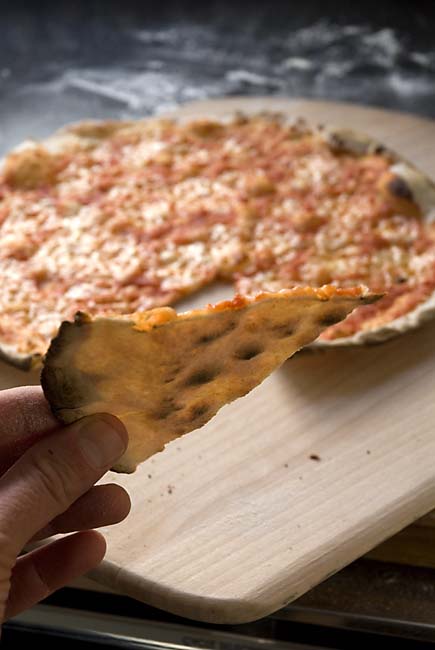
1) It makes crusts super crispy
A pizza stone will make the crust of your pizza really crispy. This is because it heats up evenly and releases heat slowly, which cooks your food from all sides at once. Without a pizza stone, you usually only get browning on the bottom of your food– not this delicious, crispy texture.
2) They’re inexpensive
Pizza stones are relatively inexpensive, so they’re a great investment for anyone who loves to cook. They’re usually sold at home and cooking stores, as well as online.
3) It makes the toppings better
The heat from a pizza stone also helps melt cheese and drive moisture away from tomatoes and onions, which makes them taste better because they don’t release liquid into your pizza. This will help all of your ingredients stay moist on top of the crispy crust!
4) Prevents sogginess
Pizza stones prevent sogginess in pizzas like no other cooking vessel can. Since there’s an even amount of heat radiating throughout the stone (unlike aluminum foil or parchment paper), it cooks everything evenly without letting liquid sit on top of dough.
5) It’s convenient
Pizza stones are super convenient because you can cook many pizzas at once. You can fit multiple small or one large stone in your oven, so it saves time and energy.
So, if you are looking for a way to create the perfect pizza crust, then be sure to use a pizza stone! It is definitely worth the investment.
How to season your pizza stone
On the way to know how to use a pizza stone, you have to master the seasoning technique for your pizza stone.
Once you have your pizza stone, it’s time to season it. A pizza stone should be seasoned before use in order for the dough not to stick during cooking, and also to prevent cracking or breakage.
There are several ways you can season your new pizza stone, these include:
Using oil Spray on oil Using flour
This is the best way to season your new stone when using oil (3):
Step 1) Preheat oven for 45 minutes at 500 degrees Farenheit
Step 2) Pour some vegetable oil in a small bowl and dip a folded paper towel in it; then wipe the entire surface of the baking with this thin layer of oil; repeating with another thin layer if necessary
Step 3) Place the baking stone in the oven on the middle rack and bake for 30 minutes
Step 4) Remove from oven and allow to cool before using
You can also season your pizza stone with flour (1):
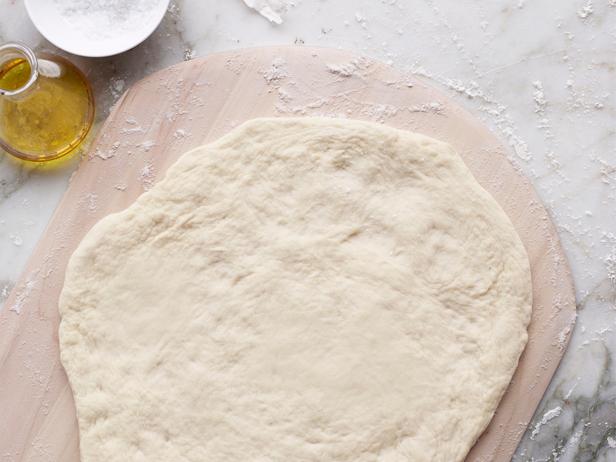
Step 1) Preheat oven for 45 minutes at 500 degrees Farenheit
Step 2) Place the baking stone in the oven on the middle rack and bake for 10-15 minutes
Step 3) Remove from oven and allow to cool before using; then dust lightly with flour before each use
No matter what seasoning method you choose, make sure to season your pizza stone every time you use it. This will help create a crispy crust and prevent sticking. Enjoy!
Now that you know how to use a pizza stone, as well as how to properly season it, you can start cooking a crispy pizza crust from home!
Just remember that the tips in this article will only work if you follow them closely. If they’re not followed correctly, your pizza may end up sticking to the stone or even breaking it.
How to clean your pizza stone
After using a pizza stone, it’s important to clean it in order to prevent your next food from sticking. This is easy to do with the following steps:
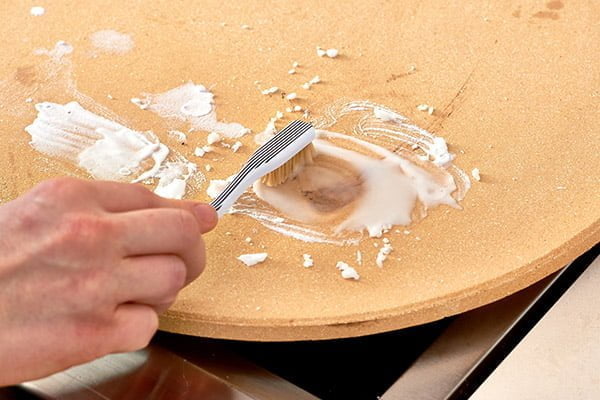
Step 1) Let the stone cool completely; you can even let it stand overnight if possible.
Step 2) Brush off any crumbs or pieces of dough which remain on the surface of the stone
Step 3) Soak your pizza stone for 30 minutes to an hour in warm water and mild dish soap; then scrub gently with a sponge and rinse clean
You should never use abrasive cleaners or metal utensils while cleaning your pizza stone. These could scratch the surface and damage its non-stick ability, making it harder for you to cook delicious pizzas in the future.
After using your pizza stone, take care not to let it sit wet or dirty overnight . Any moisture could affect its performance , so try to clean it properly right away.
Pizza Stone Cleaning Tips
Crystal Pizza Stones are very porous which makes them very easy to clean but also allows for bacteria & mold growth if not thoroughly dried before storage.
Wipe the surface of your stone with a lemon juice and salt mixture, allow it to dry thoroughly before covering it with aluminum foil or plastic wrap.
If you have extra cheese, sauce or dough on your sticks to using lukewarm soapy water. Please don’t use Brillo pads…they are way too abrasive!
Abrasive cleaners can cause dings and scratches in the surface which could lead to cracking over time. If staining is excessive consider baking a few pies at 400 degrees for 10 minutes which will make removing stains much easier without harmful scrubbing.
Cleaning Pizza Stones Made From Other Materials
The more you discover about pizza stone, the more you know how to use a pizza stone.
One of the important thing you should pay attention is cleaning pizza stone made from other materials.
Before cleaning other stones please check the manufacturer’s instructions as not all stones can be submerged in water (ie: Baking Steels) and some will fade or discolor if exposed to acidic substances (lime juice, lemon).
If you’ve used oil or flour when seasoning your stone, run under warm water with a sponge for five minutes before rinsing off any excess. You can also use a brush to scrub off any food residue. Dry completely before putting it away.
Just take your time, and you’ll have a clean pizza stone in no time!
9 Secret Tips to get the most out of your pizza stone
Are you using a pizza stone to make your delicious pizzas? If not, then you’re missing out on some of the best results that you can achieve in mastering how to use a pizza stone.
A pizza stone is ideal for getting a crispy crust and evenly cooked toppings, so read on for our top 9 tips to get the most out of yours.
Tips 1) It’s best to use your pizza stone in the middle of your oven, rather than underneath or above. This way, everything that’s cooking will be evenly heated by the stone.
Tips 2) Use your pizza stone on a rack which is slightly lower than what you’re using for other foods you’re cooking. For example, if you are cooking something else at 450 degrees Fahrenheit, place your baking stone at 425 degrees so it cooks food quickly and more evenly.
Tips 3) Avoid sliding any pizza off of a metal utensil onto your pizza stone! Instead, always use a wooden one in order to reduce risk of breakage/damage or sticking in general.
Tips 4) The more seasoned your cooking surface is, the better! This is why it’s important to season your baking stone with oil or flour before each use.
Tips 5) Use your pizza stone for other foods besides pizza, like breads and pastries!
Tips 6) If you’re cooking something else at the same time as your pizza, try putting the pan on top of two burners; then slide the food off onto a reduced-temperature oven to avoid burning it
Tips 7) Always check food when using a pizza stone in order to prevent burning or overcooking! This will allow you to adjust heat levels accordingly.
Tips 8) When baking a frozen pizza, only use the maximum temperature for one hour if possible
Tips 9) Add a few drops of water on the stone every so often while cooking in order to keep the surface moist and prevent it from drying out. This will help prevent sticking, especially when cooking delicate foods like pasties
Stone Care:
Don’t use an oven stone on a grill unless it specifies that it can be used at high temperatures and has been proven to withstand direct flame.
Preheating:
How to use a pizza stone for reheating pizza?
Pizza stones should always be preheated with the oven in order to get hot enough for baking steamy pies within 90 seconds of opening the door.
For best results place your stones on different shelves in the lower third of your gas oven or directly on your pizza/baking stone rack in electric ovens.
When using multiple stones keep them 2-3 inches apart from each other to circulate maximum heat evenly. Internal dimensions of baking stones are usually 13″x15″.
Cleaning the Stone:
After preheating, discoloration or debris can be cleaned with a non-abrasive brush. NEVER use soap and water on porous materials!
Once you have removed any loose particles, turn off your oven and allow stone(s) to cool completely before placing in storage area.
If staining is excessive consider baking at 400 degrees for 10 minutes which will make removing stains much easier without harmful scrubbing.
Having a pizza stone allows you to easily cook delicious pizzas at home, no matter what kind of oven you have!
Just remember that if you don’t season your stone with oil or flour before each use or clean it properly after each use, you won’t get the best results. Don’t forget these tips in order to get the most out of your baking stone!
Different types of stones, pros and cons of each type
When it comes to pizza stones, there are a few different types that you can choose from. Here’s a look at the three most popular ones:
- Ceramic pizza stones
- Porcelain pizza stones
- Stone bricks
Ceramic and porcelain pizza stones are two of the most popular types on the market, as they are both non-stick and relatively affordable. However, keep in mind that they may not be as durable as stone bricks.
If you’re looking for a long-lasting option, stone bricks are your best bet. However, they can be quite heavy and expensive. In the end, it all comes down to personal preference and what you’re looking for in a pizza stone.
Ceramic Pizza Stones
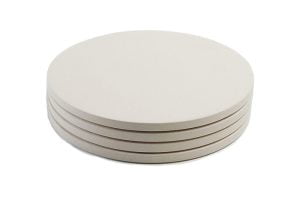
One of the most common types of pizza stones, ceramic is a great option for those who want a non-stick cooking surface that won’t affect the taste or smell of their pizzas! They’re also exceptionally durable and will last quite a long time without any damage or issues.
Porcelain Pizza Stones
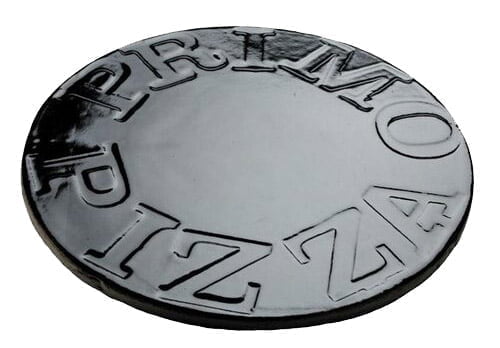
Like ceramic, porcelain stones are non-stick and won’t affect the taste or smell of your food. However, they’re slightly more expensive than ceramic ones, but it’s worth it if you’re looking to get something that will last!
Stone Bricks
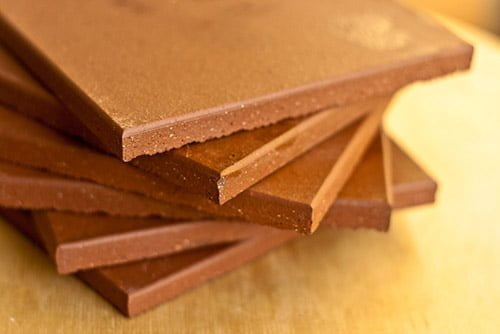
Stone bricks are another durable type of pizza stone, with some even being able to withstand extreme heat without any issue. They also won’t affect the taste or smell of your food, and they’re quite versatile thanks to their shape. However, they can be heavy and difficult to handle!
There are a few different ways that you can use a pizza stone in order to cook yummy pizzas at home. Just remember that for best results, always season your oven with cooking spray or flour before placing the stone inside!
Here’s a look at some of the most common ways people use baking stones:
Baking/Cooking Your Pizza
This is one of the most popular methods used when cooking with a pizza stone. Simply place your dough on top of some cornmeal – it’ll help prevent sticking! Then pop it the oven and bake as usual.
Roasting Vegetables
If you’re not in the mood for pizza, try cooking some vegetables on your stone! It’s a nice change and they always come out great. Simply season with salt and pepper and place them on top of the stone about five minutes before serving. This makes a great side dish or snack option.
Grilling Meat
This may be one of the most interesting uses for pizza stones – grilling meat! Just remember to keep an eye on things, as it can take quite a bit longer than usual thanks to the presence of your stone.
You’ll need to make sure that everything is cooked through properly, so avoid this method if you’re looking for something quick and easy.
Reheating Pizza
One of the best uses for a baking stone, simply put your cold pizza on top and pop it in the oven! This will help heat things up quickly without drying them out. It’s an especially good way to reheat leftovers or cook frozen pizzas!
You can also use this method to re-crisp your crust if it happens to be soft after removing from the fridge.
Storing your Pizza Stone
Some people store their stones on the oven shelf and others place them upside-down on the floor of the oven. This is not ideal as it can take up to an hour for all parts of the stone to heat uniformly and may lead to cracking and breakage.
It is also possible that oil from previous pizzas will eventually get caught between the grates of your oven and accumulate enough soot over time to create smoke inside your home when you bake without oiling your stone first.
The best storage practice is to wrap the stone in heavy duty aluminum foil (especially if it has been used more than 3 times) and then place it in the bottom of your oven.
Although pizza stones are considered “durable” they should not be exposed to extreme changes in heat or cold. Avoid refrigerating or freezing them when you aren’t using them because their thermal conductivity is much less than that of water, which means they will take much longer to reheat!
The same goes for dropping them on a hard surface…they can crack! If this does happen store it in a garage or sheltered area until spring time when its ground temperature has returned to normal.
Recipes for making delicious pizzas on a stovetop or grill with your new pizza stone!
Now that you’ve learned how to use a pizza stone, it’s time to start using it! There are many different ways to use a pizza stone, so we’ve put together a few recipes to get you started.
First, let’s start with the basic stovetop method.
This is great for those who want that classic brick oven flavor right in their own kitchen.
1. Preheat your oven to 550 degrees F (or as close as you can get). Place your pizza stone on the bottom rack and let it heat up for about 30 minutes.
2. Take a ball of dough and roll it out into a thin circle. If you’re using a pre-made pizza crust, follow the instructions on the package.
3. Place the dough on a lightly floured surface and use your hands to stretch it out.
4. Transfer the dough to a pizza peel or a baking sheet that’s been sprinkled with cornmeal.
5. Add your sauce and toppings and then use a pizza peel or baking sheet to transfer the pizza to the pizza stone.
6. Bake for 8-10 minutes, or until the crust is golden brown and the cheese is melted and bubbly.
Now let’s move on to the grill!
This is a great way to cook pizzas during the summer months when you don’t want to heat up your kitchen.
1. Preheat your grill to mediumhigh heat (about 400 degrees F).
2. Place a pizza stone on top of the grill grate and let it heat up for 15 minutes.
3. Roll out your dough onto a lightly floured surface and stretch until it’s about 12 inches in diameter. If you’re using pre-made crust, follow the instructions on the package.
4. Transfer the dough to a pizza peel or a baking sheet that has been sprinkled with cornmeal.
5. Add your sauce and toppings and then use a pizza peel or baking sheet to transfer the pizza to the grill grate (or if you have one, place a second stone under the first one). Cook for about 8 minutes, or until golden brown and bubbly!
Troubleshooting for common problems with using pizzas stones
Problem: My pizza stone isn’t heating up. What could be the problem?
There are a few potential problems that could be causing your pizza stone not to heat up. One possibility is that you may have put your pizza stone in the oven incorrectly- be sure to check the manufacturer’s instructions for placement.
Another possibility is that there is something blocking the heat from reaching your pizza stone- make sure there is nothing obstructing the top or sides of your oven.
Finally, if you have had your pizza stone for a while, it may need to be replaced- stones tend to wear down over time and lose their ability to produce heat evenly.
Problem: My crust isn’t getting crispy. What could be the problem?
There are a few potential reasons why your crust might not be getting crispy. One possibility is that you’re using too much sauce or toppings, which can prevent the crust from cooking evenly.
Another possibility is that your pizza stone isn’t hot enough- be sure to preheat your stone for at least 30 minutes before baking your pizza.
Finally, if you’re using a store-bought dough, it might not have been made with high-quality ingredients and may not cook up as crispy as you’d like.
Problem: My pizza is coming out charred on the bottom. What could be the problem?
If your pizza is coming out charred on the bottom, there could be a few reasons why. One possibility is that your oven isn’t hot enough- be sure to preheat for at least 30 minutes before baking.
Another possibility is that you didn’t cook your dough long enough before adding toppings or cooking in the oven- these steps should always follow after baking time in the oven.
Finally, it may take some trial and error to find out what temperature and how long it takes to actually get a crisp pizza crust in your own oven .
Problem: It smells like something is burning when I use my stone inside of the oven. What could be the problem?
If you notice a smell coming from your oven while using your stone, there are a few possibilities of what it could be. One possibility is that you’re cooking your pizza at too high of a temperature, and the cheese or toppings are burning.
Another possibility is that there is something else in your oven- like an old pizza or cookie sheet- that is causing the smell. Be sure to check for any obstructions in the top or sides of your oven, and clean it regularly to prevent any smells from happening in the future.
FAQs about How To Use A Pizza Stone
How do you keep pizza from sticking to a pizza stone?
There are a few different options to help keep pizza from sticking to a pizza stone:
- Sprinkle some cornmeal on the baking surface where you’ll be putting your dough. The cornmeal will serve as an extra barrier between the dough and the stone, helping it bake evenly and preventing any bits of crust from sticking.
- Use parchment paper or foil if you don’t have access to a pizza peel to move your dough onto the oven floor.
How much does a pizzas stone weigh?
Most pizza stones range in weight from 3 pounds up to 10 pounds. However, this can vary depending on where you purchase yours from and its size. Be sure that when purchasing a pizza stone, you find one that is the appropriate weight for your kitchen counter or oven.
Can I use a pizza stone on the grill?
Yes! You can use a pizza stone on the grill by preheating it on high heat for about 30 minutes before cooking your pizza. This will help create an even crust and prevent your pizza from burning.
Do you heat the pizza stone before you put the pizza on it?
Yes! You want to bake your pizza on a stone that has been heated for at least 30 minutes at the very minimum. This will help give you an even crispier crust, and prevent any soggy spots from happening.
How do you get a crispy crust on a pizza stone?
One thing that you want to do is make sure that the oven is preheated for at least 30 minutes before putting your dough in. You also want to be using a high-quality dough recipe as well as a pizza stone.
If you’re concerned about getting a crispy crust, try baking your next pie at an even higher temperature than usual- this will help with any soggy spots on your dough from happening!
How do you slide a pizza on a pizza stone?
You’ll want a pizza peel for this. After letting your dough rest, you can roll or stretch it into the desired shape and size. Dust a bit of cornmeal onto the surface where you’re going to place your crust, then gently pick up one side of the dough and carefully set it on top of the stone.
Can you use a pizza stone with other foods?
Yes! A pizza stone is great at distributing even amounts of heat which means that it works just as well for meats, casseroles, calzones, cinnamon rolls- anything that would usually go in an oven!
Just be sure to take note of its dimensions before purchasing so that you don’t purchase something too large or small that won’t work with your appliances.
Why is my pizza crust soggy on a pizza stone?
There are a few different reasons that your pizza crust might be getting soggy.
- Make sure that your oven is preheated for at least 30 minutes before baking anything. This will help make sure that the stone isn’t hot when it first goes in, but quickly heats up with the oven to give you an evenly baked pie!
- Use high quality dough store bought dough can often cook faster than homemade which means you may want to try scaling back the time on how long it bakes.
- If you’re using a pizza peel, make sure it’s dusted with enough cornmeal so that you can easily slide everything onto the oven floor without having any parts of your crust sticking to either surface.
Can you put frozen pizza on a pizza stone?
You can, but you’ll likely need to preheat the pizza stone for a longer amount of time to ensure that the pizza cooks evenly. You may also need to adjust the cooking time so that the frozen pizza doesn’t overcook.
For best results, try knowing how to use a pizza stone and using a pizza stone specifically designed for use with frozen pizzas. This will help prevent any sticking or burning from happening.
What rack does the pizza stone go on?
You want to place the pizza stone directly on the bottom rack of your oven while it preheats. This will ensure even baking for your crust.
Can I put a pizza stone on the stove?
You definitely should not put a pizza stone on the stove! Pizza stones are designed to withstand even high heats, and placing it on the stovetop will cause them to crack or break.
What temperature do you cook pizza on a stone?
Pizza stones are best when heated at a high temperature- between 500 and 600 degrees Fahrenheit. If you’re using a stone that doesn’t come with a preheat guide, start by heating it at this temperature for about 30 minutes before cooking your pizza. This will help ensure that the crust is crispy and not burnt.
How long do I cook a pizza on a pizza stone?
Cooking times for pizza stones can vary, but generally speaking you’ll want to bake your pizza for about 15-20 minutes at a temperature of 500-600 degrees Fahrenheit. Baking times may also need to be adjusted depending on the size and thickness of your pizza dough.
Final thoughts about How To Use A Pizza Stone
You now have a comprehensive guide on how to use a pizza stone. This is an easy step you can take in order to create the perfect crust for any type of pizza – from thin-crust pizzas all the way up to deep dish pizzas!
The most important thing about this process is following these steps closely with precision and patience, so that you can enjoy delicious homemade pizza every time.
Now that you know how to use a pizza stone, it’s time to start cooking some delicious pizzas!
Remember to season your stone every time you use it for the best results, and make sure to clean it after each use. With a little bit of practice, you’ll be able to create the perfect pizza crust every time. Thanks for reading!
If you want more information on anything we’ve covered in this article, be sure to check out our blog post archives or contact us where one of our team members will help answer your questions. We look forward hearing from you soon!
Read more: Top 12 Best Wood For Pizza Oven
How To Season A Pizza Stone (A Complete Guide)

